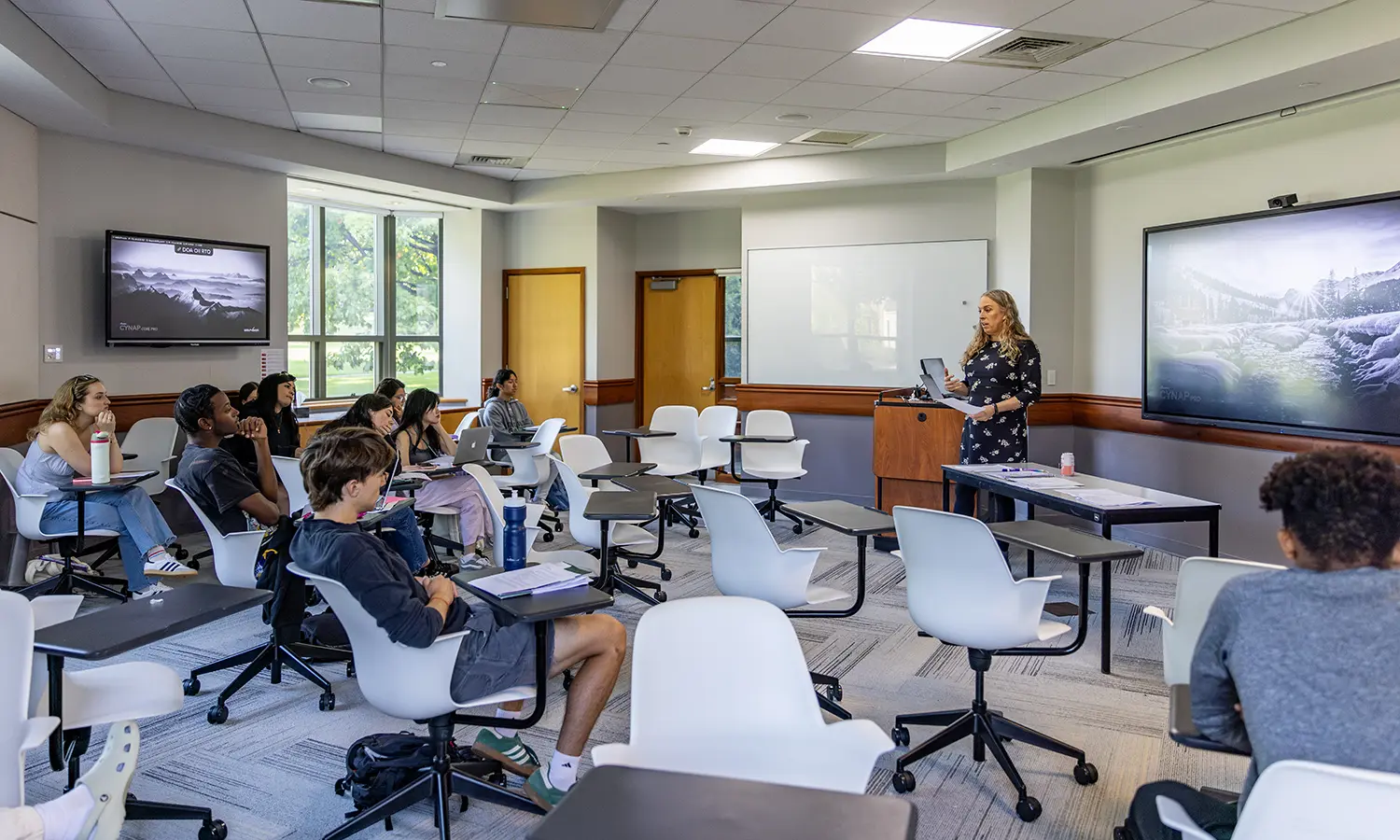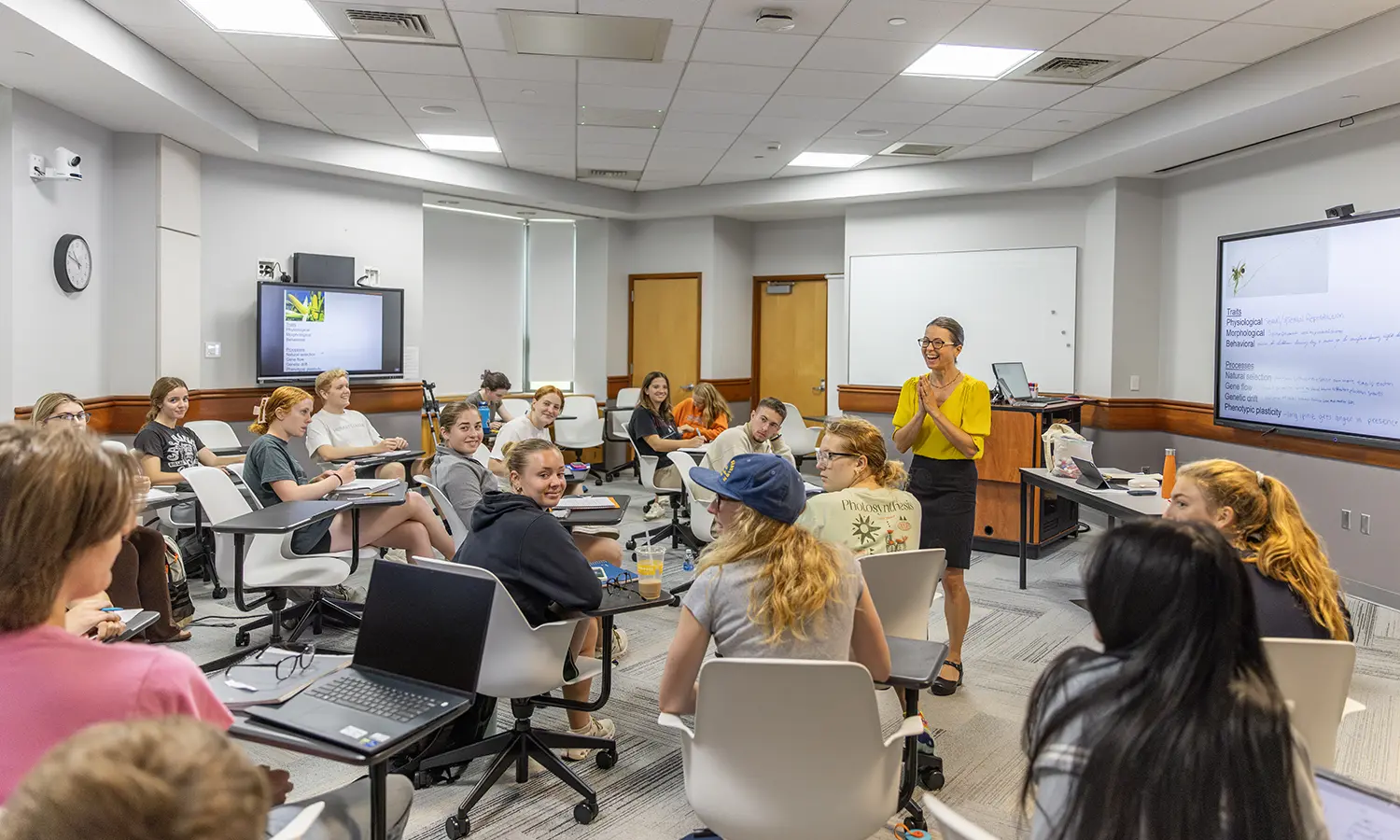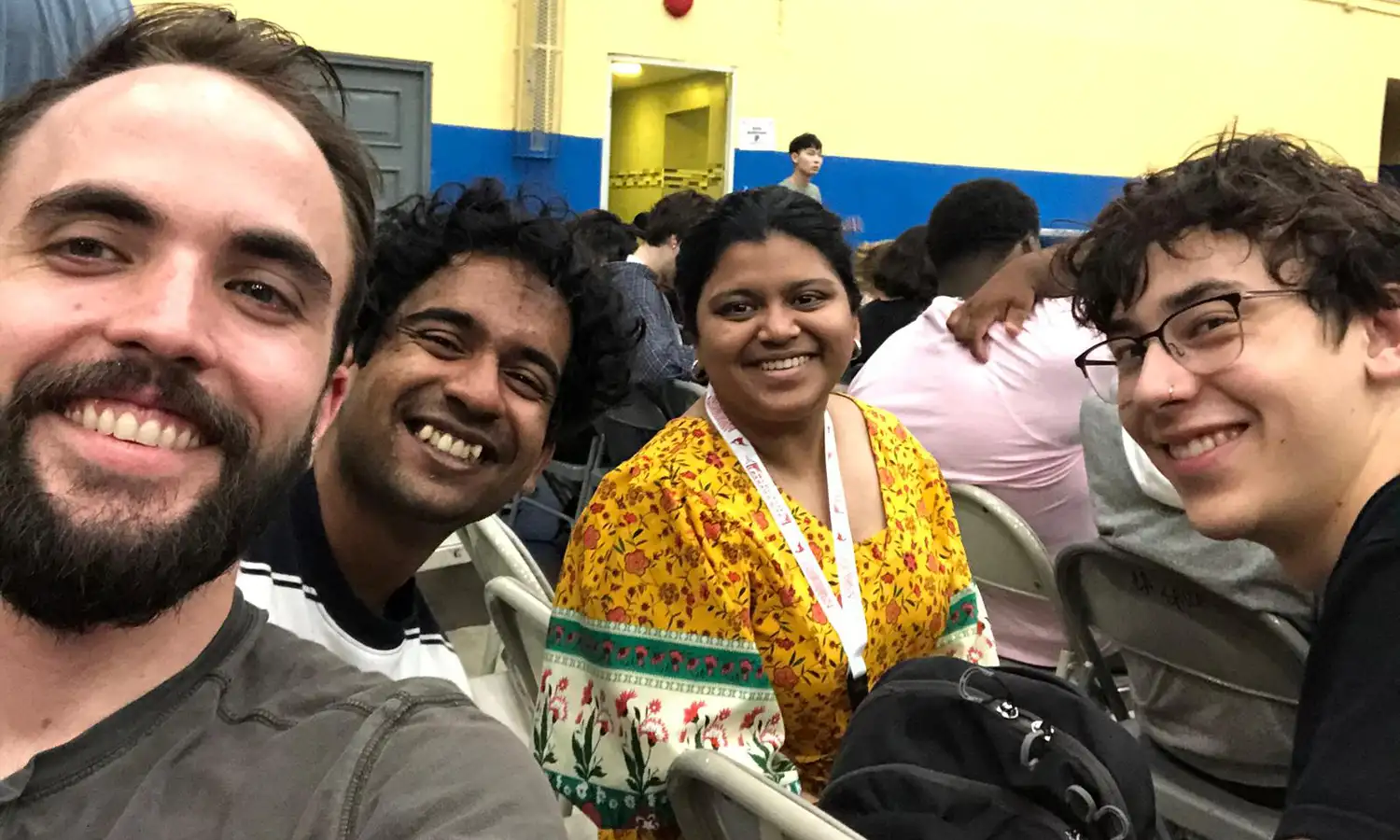
HWS News
19 November 2024 Cooperative Teaching and Learning
Campus classrooms and labs receive renovations to boost collaboration and accessibility.

This fall, faculty and students across campus are benefiting from newly renovated and upgraded classrooms, labs and studios designed to foster collaboration in teaching and learning while enhancing accessibility for students.
Through the work, eight classrooms and labs received significant enhancements, including the Katherine D. Elliott Studio Arts Center, Napier Hall, Stern Hall and Smith Hall. The academic spaces host a variety of courses, ranging from biology to architecture to data analysis and writing seminars.
“These improvements are aimed directly at enhancing both the teaching experience of faculty and the learning experience of students through improved accessibility, technology and infrastructure,” says Provost and Dean of Faculty Sarah Kirk, noting the selected projects targeted spaces that would impact the most students.

To support multimedia architectural design projects, the art lab at the Katherine D. Elliott Studio Arts Center has been upgraded and now features 18 stations equipped with new hardware designed to enhance students’ architectural design skills. This equipment helps students master key concepts using industry standard software such as Autodesk and Rhino, along with other 3D design tools.
Assistant Professor of Art and Architecture Max Piersol ’16 says the technology upgrade makes HWS students more competitive candidates for top graduate programs and gives them desirable skills for design professions.
“The technology provides practical skill development and cutting-edge learning experiences through tools like 3D modeling, parametric simulation, and VR,” he says. “For example, we can now teach contemporary methods of sustainable design practices by simulating various environmental impacts on buildings and vice versa. Overall, the lab ensures our students are proficient in current technologies and are well-prepared to lead and innovate in the architecture and design fields of the 21st century.”
The improvements also promote equal access for all students. “Students no longer need to purchase software independently, which ensures equitable access to these important tools considering our students come from diverse economic backgrounds,” Piersol explains.
Napier 101 also saw significant upgrades. Vice Provost of Assessment, Accreditation and Institutional Effectiveness Julia MaKinster, who co-chaired the committee overseeing the campus projects, teaches her First-Year Seminar “The Lens of Stand-up Comedy” in this space. The classroom is equipped with multiple LCD screens, screen casting capabilities for both faculty and students, dynamic touchscreen graphic annotation, multiple cameras for video conferencing, and portable student whiteboards for collaboration
“The technology in the room opens up exciting possibilities for student engagement and collaboration. I like that students can project their laptop screens onto any of the three displays. The touchscreen makes navigating websites and software so much faster, and the portable whiteboards are a great way for students to work both individually and in small groups,” she says.
While teaching “Ecology” in Napier 101, Professor of Biology Meghan Brown says the new technology offers significant advantages by allowing both digital and analog information to be seamlessly integrated during a lesson. “A student can now manipulate a slide by hand, which mirrors what scientists do—observe, assess and annotate data in real time,” she says.
Brown further explains that the technology efficiently enables access to various devices and applications, and also allows multiple student group projects to occur simultaneously. For example, during a recent lesson on algal blooms and their increased prevalence, students divided into three groups, each investigating various traits: the organism’s physical form, migratory behaviors and internal metabolism.
Moving forward, additional surveys and ongoing discussions will solicit input from faculty to explore their experiences and make improvements to these and other teaching spaces on campus, says MaKinster.
Photo at top: Assistant Professor of Art and Architecture Max Piersol works with students in “Intro to Digital Design” in the technology lab of the Katherine D. Elliott Studio Arts Center.



